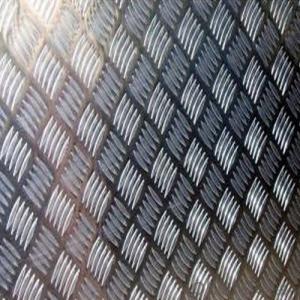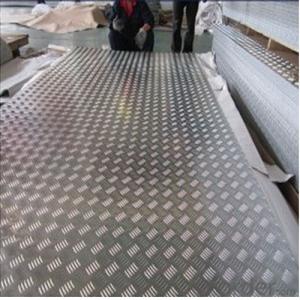Buy Aluminum Diamond Plate
Buy Aluminum Diamond Plate Related Searches
Led Light Bulbs For Ceiling Fixtures Led Lamps For Ceiling 42 In Ceiling Fan With Light Aluminum Coil Stock For Gutters Aluminum Foil For The Grill Hole Saw For Aluminum Plate Aluminum Tread Plate For Trailer Bow Plate For Aluminum Boat Aluminum Foil For Grow Room Aluminum Foil For Joint PainHot Searches
Stock Price For Aluminum Aluminum Coil Stock For Sale Aluminum Gutter Coil For Sale Used Aluminum Scaffolding For Sale 1/4 Aluminum Plate For Sale Aluminum Bar Stock For Sale Aluminum Round Stock For Sale Aluminum Diamond Plate For Sale Aluminum Scaffolding For Sale Craigslist 6061 Aluminum Plate For Sale Aluminum Dock Plate For Sale 7075 Aluminum Plate For Sale Aluminum Tread Plate For Sale Aluminum Checker Plate For Sale Aluminum Plate For Sale Near Me Plate Aluminum For Sale Aluminum Plate For Sale Aluminum Square Stock For Sale Aluminum Flat Stock For Sale Billet Aluminum Stock For SaleBuy Aluminum Diamond Plate Supplier & Manufacturer from China
Okorder.com is a professional Buy Aluminum Diamond Plate supplier & manufacturer, offers integrated one-stop services including real-time quoting and online cargo tracking. We are funded by CNBM Group, a Fortune 500 enterprise and the largest Buy Aluminum Diamond Plate firm in China.Hot Products
FAQ
- I recently moved into a 1975 house with aluminum wiring. I will be going through and checking/replacing all receptacles and switches with CO/ALR rated ones as I don't have a budget right now to rewire the house. I am wondering if I should be checking all of the ceiling lights as well as some of them would be very difficult to access. Are lights as big a concern with aluminum connections as receptacles? I am sure some of the lights are newer and would have copper wire connected to the aluminum. Should I be concerned about the type of wire nuts used here?Anything else that I should be checking?
- Connections at ceiling lights have far less potential for a problem, but a potential none the less. So, while you are at it, go ahead and check them. The antioxidant compound and al/cu listed wire nuts (marriets) are the correct and proper materials to use. I applaud you for having done your homework. After tightening each connector be sure to pull on each and every wire to ensure they are good and tight. When combining solid and stranded wire, slide the stranded past the solid about an 1/8 before capping. We in the trade use 9 lineman's pliers to twist all wires before capping them. An inexpensive pair (of Lineman's) can be had for under $20. A good pair of wire strippers (with built in screw cutters) can be had for about $15. I mention the screw cutter because there is a good chance that somewhere along the line you will find a location where the stock 7/8-1 screw bottoms out against something before it gets tight. If you force it it will strip out. Not to mention it might dig into the insulation on a wire resulting in a short. Screws in devices (receptacles, switches, dimmers etc.) are 6-32 and light fixtures are typically 8-32. I would also get a non-contact tester. A.k.a. inductive tester. Very handy at times. When you are sure the power is off to a box it might not be. On an occasion another hot will be present. The beep testers will quickly alert you to the presence of another live circuit. A multi-tester will allow you to identify wires should you fail to mark them before working on them. If you mark the location of each wire to a 3 or 4-way switch before replacing it you will save yourself a lot of time. Same with wires to any GFI receptacles. Swapping wires location to location may not be correct. Some have the Line terminals on one side, while most have them on the top. But I get the impression you have a bit of experience or a friend who does helping you with this.
- Aluminum sheets are capable of being used as heat shields. The reason for this is that aluminum possesses exceptional thermal conductivity, enabling it to effectively conduct and transfer heat away from its source. Moreover, aluminum exhibits a high melting point, which enables it to endure high temperatures without distorting or warping. These characteristics render aluminum sheets an optimal selection for heat shield purposes, which encompass safeguarding delicate components and structures from heat-related harm in various industries such as automotive, aerospace, and industrial sectors. Additionally, aluminum is lightweight and comparatively easy to mold, which makes it a practical alternative for heat shields that necessitate installation in confined areas or intricate designs. In summary, utilizing aluminum sheets as heat shields provides efficient thermal protection while offering durability, versatility, and cost-effectiveness.
- Yes, aluminum sheets are suitable for outdoor use. Aluminum is a highly durable and corrosion-resistant material, making it ideal for outdoor applications. It is lightweight, yet strong enough to withstand harsh weather conditions, such as rain, snow, and UV radiation. Additionally, aluminum sheets can be coated or painted to further enhance their resistance to corrosion and provide added protection against the elements. This makes them a popular choice for outdoor structures, signage, roofing, and other exterior applications where durability and longevity are essential.
- I wish to purchase an 8' step ladder as well as a medium length extension ladder. What are the pros and cons of aluminum vs. fiberglass?
- Aluminum Vs Fiberglass Ladder
- Yes, aluminum sheets can be used for elevator interiors. Aluminum is a commonly used material in elevator construction due to its durability, lightweight nature, and aesthetic appeal. It provides a sleek and modern look to elevator interiors while also offering high resistance to corrosion and wear.
- Aluminum sheet is made through a process called rolling, which involves passing a preheated aluminum ingot through a series of rolling mills. The initial step is the heating of the ingot to a specific temperature to make it more malleable. Once heated, the ingot is then passed through a series of rolling mills, where it is continuously pressed and stretched to reduce its thickness and increase its length. The rolling mills consist of a pair of rotating cylinders with grooves on their surfaces. As the ingot passes through these cylinders, it is compressed and elongated, resulting in a thinner and longer sheet. The process is repeated multiple times, with each pass reducing the thickness of the sheet further. To maintain the desired thickness and dimensions, the sheet is periodically annealed, which involves heating it to a specific temperature and then slowly cooling it. This annealing process helps relieve internal stresses and ensures the sheet retains its desired properties. Once the desired thickness is achieved, the aluminum sheet is cooled, trimmed, and cut into specific lengths or rolled into coils for further processing or distribution. The final product is a flat, thin, and versatile sheet of aluminum that can be used in a wide range of applications, from construction and automotive industries to packaging and electrical appliances.
- The fatigue strength of aluminum sheets varies depending on several factors such as the alloy composition, thickness, surface condition, and the specific loading conditions. Aluminum alloys generally exhibit good fatigue strength, particularly when compared to other metals. The fatigue strength of aluminum sheets is typically determined through fatigue testing, where specimens are subjected to cyclic loading until failure. The S-N curve, which represents the relationship between the number of cycles to failure (N) and the applied stress amplitude (S), is used to characterize the fatigue behavior of aluminum sheets. Aluminum alloys, such as 2024-T3 and 6061-T6, commonly used in aerospace and automotive industries, have high fatigue strengths and can withstand millions of cycles at certain stress levels. For example, 2024-T3 aluminum alloy has a fatigue strength of approximately 105 MPa (15,000 psi) at 10^6 cycles, whereas 6061-T6 aluminum alloy has a fatigue strength of around 96 MPa (14,000 psi) at the same number of cycles. It is important to note that the fatigue strength of aluminum sheets can be influenced by various factors, such as the presence of surface defects, corrosion, temperature, and loading frequency. Proper surface preparation, including smoothing and removing sharp edges, can increase the fatigue strength of aluminum sheets. Additionally, the use of proper stress relief treatments and design considerations, such as avoiding stress concentrations and optimizing joint design, can also improve the fatigue performance of aluminum sheets. Overall, the fatigue strength of aluminum sheets is generally considered to be good, but it is important to consider the specific alloy, thickness, surface condition, and loading conditions to accurately determine and optimize the fatigue performance in practical applications.
- nan
- AlSO4 CaCl














































